2024 Suzuki GSX-8R Review
By Rennie Scaysbrook, Photography by Kevin Wing
It’s nice to see Suzuki on the comeback trail. The company has been largely absent from the sporty side of life since re-releasing the GSX-R1000 back in 2017, but the proceeding years since the Covid pandemic has seen big S bring forth a slew of new bikes that has reminded us all just why they were so big in the first place.
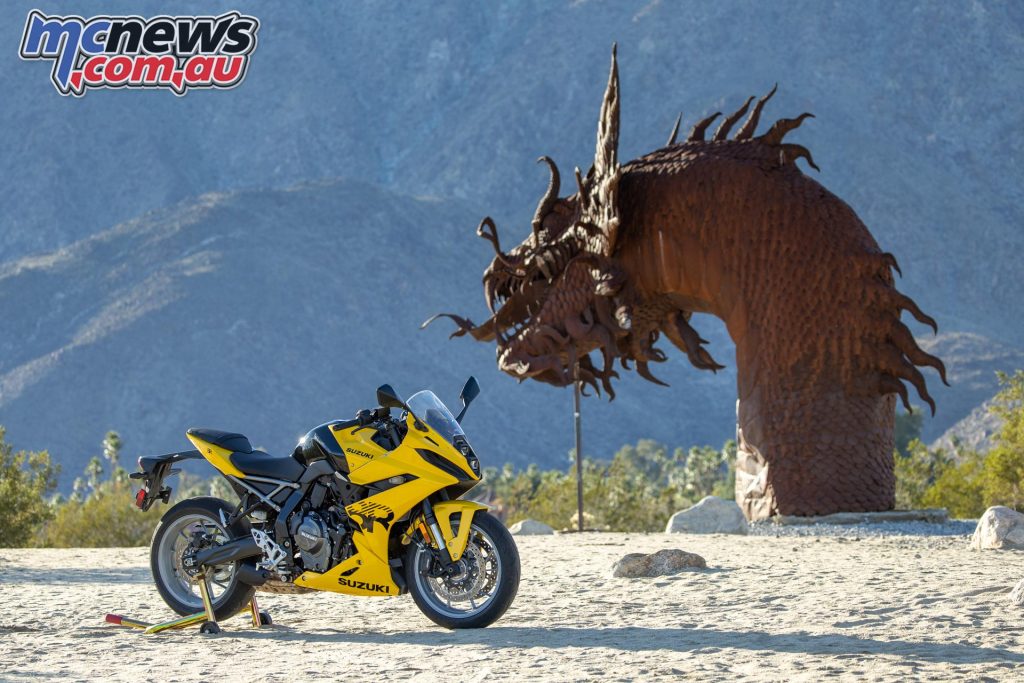
One of the surprise packages of the 2023 model year was the GSX-8S that we tested here. This, believe it or not, was the first all-new streetbike platform from Suzuki since 1999 (I know that sounds impossible, but it’s true).
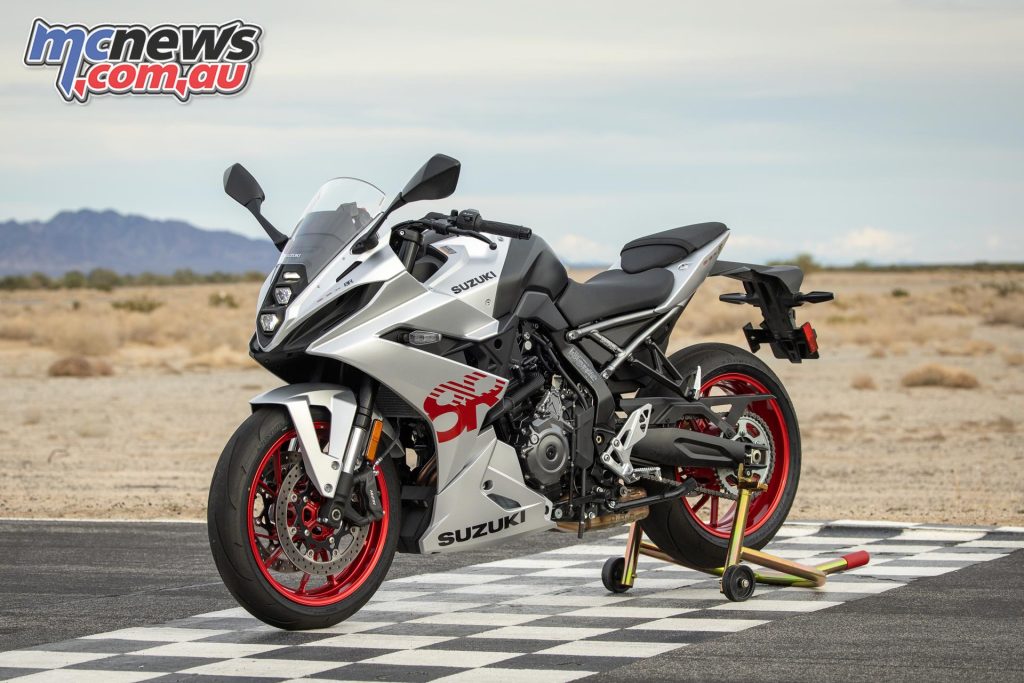
The 8S rolled up to the middleweight naked class with a brand new 776 cc parallel twin-cylinder motor that pumped just north of 80 horsepower (83 hp, to be exact / 61 kW).
Alongside a roomy, comfortable chassis that loved a good thrashing — albeit with pretty basic suspension — and looks that were a definite improvement on the stacked headlight design first seen with the GSX-S1000 four-cylinder of 2022. And you got all that for under $15K. Not bad.
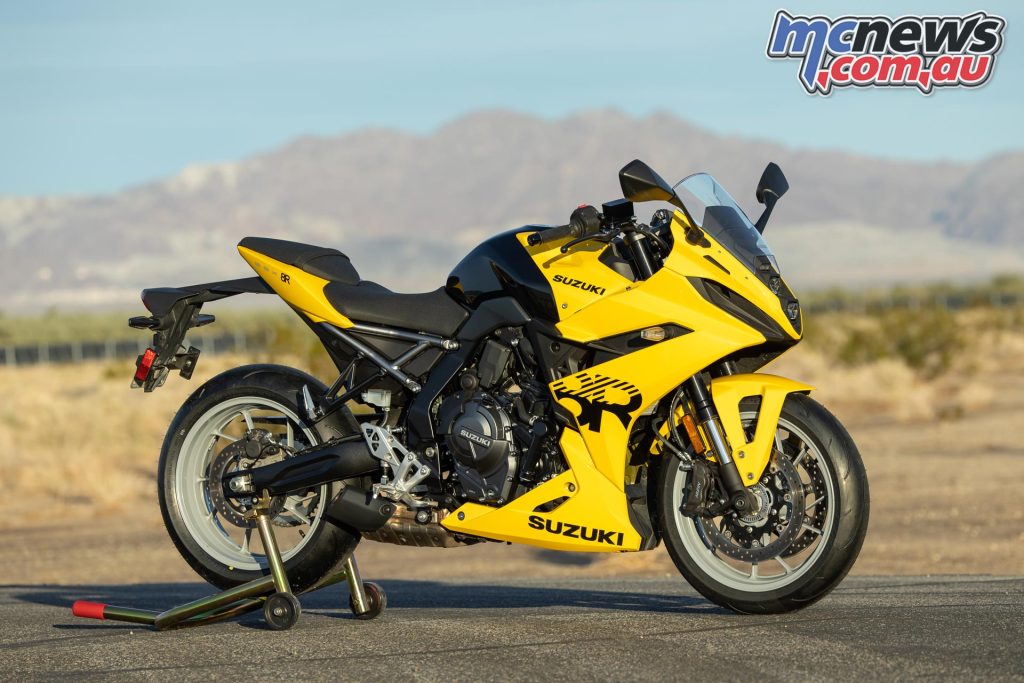
We all knew, however, that this would not be the last we heard of the 776 cc when it was matched to a pair of 17-inch wheels. One of the fastest growing segments — aside from ADV riding which we all know has gone stratospheric since Covid — is that of the middleweight sportbike.
Aprilia and their RS660, Yamaha and their YZF-R7, and Kawasaki with the aging Ninja 650 have dominated these headlines in recent years. Suzuki decided they wanted in on the action.
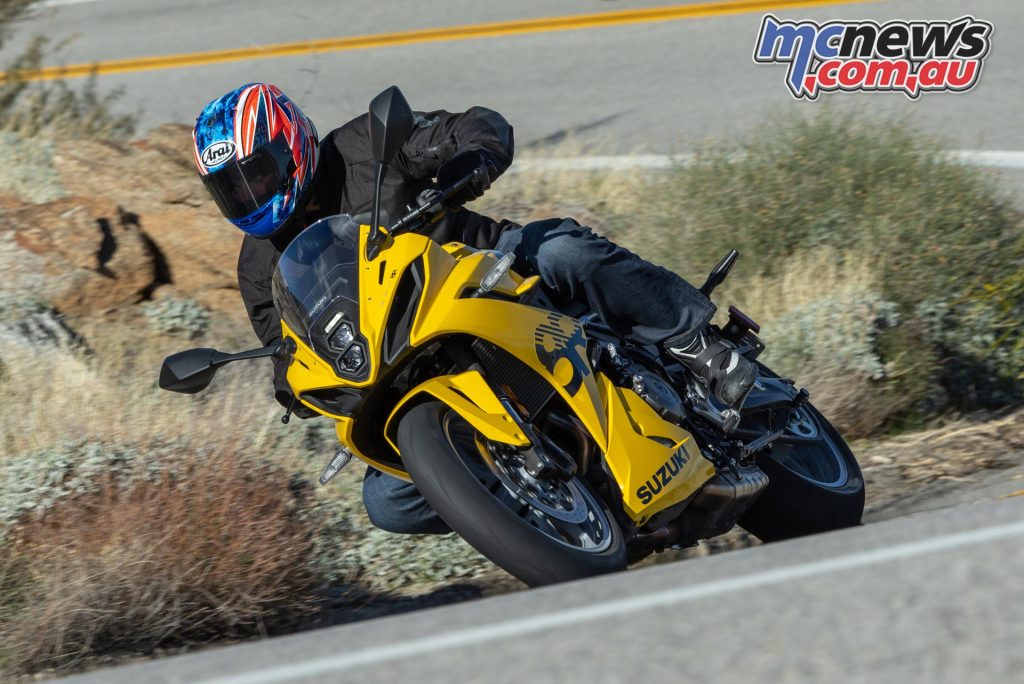
Suzuki, funnily enough, pretty much invented the twin-cylinder middleweight game with the enormously successful SV650, a machine that ran for the best part of two decades with minimal changes, but Aprilia were really the ones to move the game on in recent years. The RS660 has been a boon for Noale, and Suzuki wasn’t going to sit idly by while the Italians and a couple of Japanese compatriots took the glory.
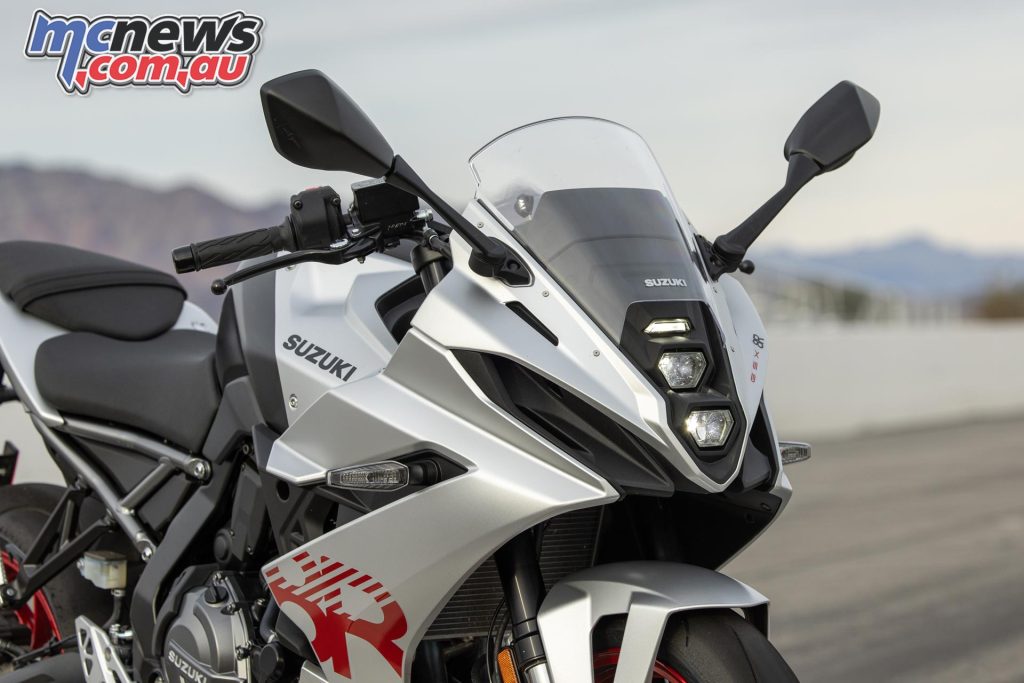
The new $14,990 GSX-8R is thus a GSX-8S in fancy clothing, but there’s a little more to it than that. The first and most obvious change is the new bodywork that looks like the nine-month result of a Saturday night fling between a Katana and a GSX-R.
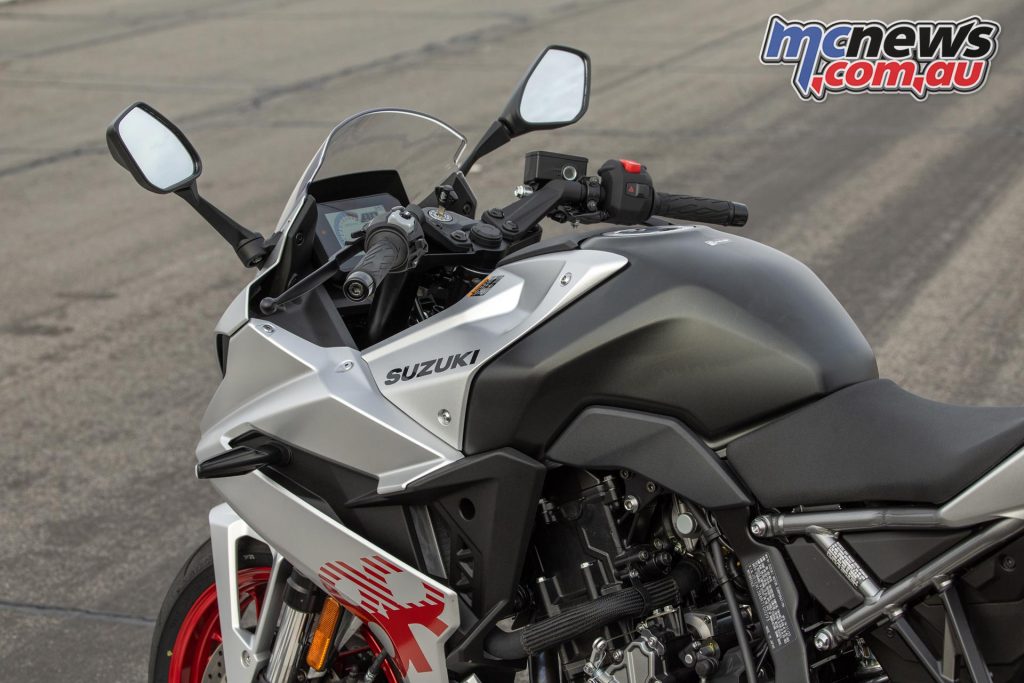
The sharp, angular bodywork with its low-angled screen is matched to high-rise clip-on handlebars that have the rider in more of a nakedbike stance than a traditional sportsbike. Anyone with an internet connection can Google a late 1980s Honda CBR600F and see the resemblance is pretty clear. Back to the future? Perhaps the ’80s really was the best decade to be alive.
Those handlebars are now mounted on the top of the top triple-clamp and are a two-piece forged aluminium design, which angles the rider a little forward from vertical and gives a near-perfect posture for sedate sport riding or general commuting.
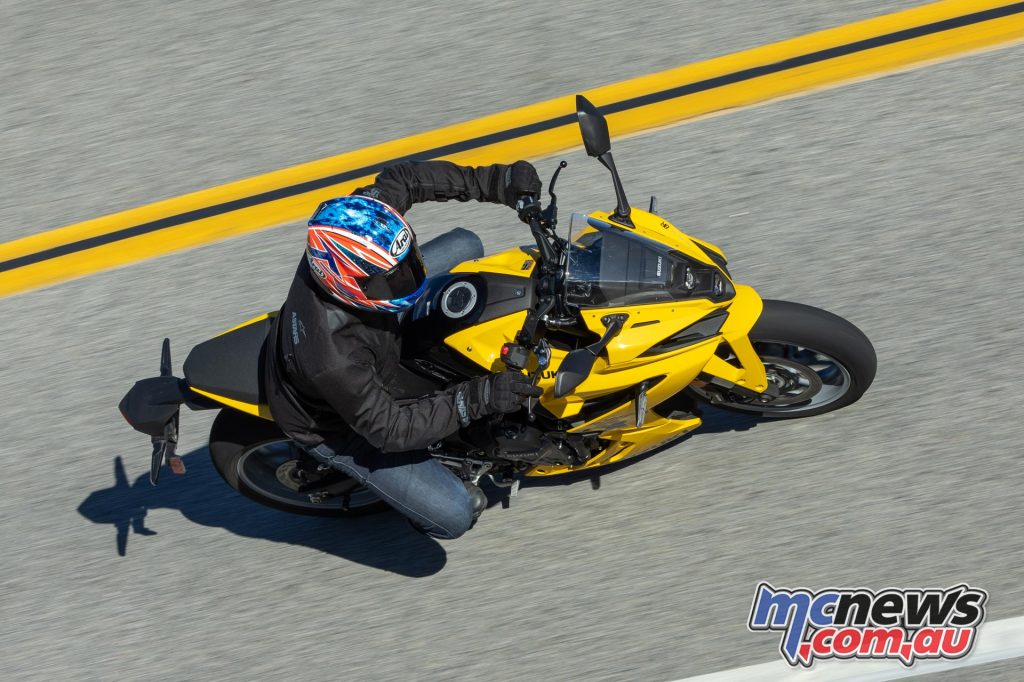
Suzuki has really hit a sweet spot on their screen/fairing designs of late, as we found a similar trait on the GSX-S1000GT+ sport tourer Wayne tested back in 2022. Suzuki has shied away from making the screen too angular, thus allowing the majority of the wind to hit the rider’s chest and not their helmets, thus making a more comfortable ride.
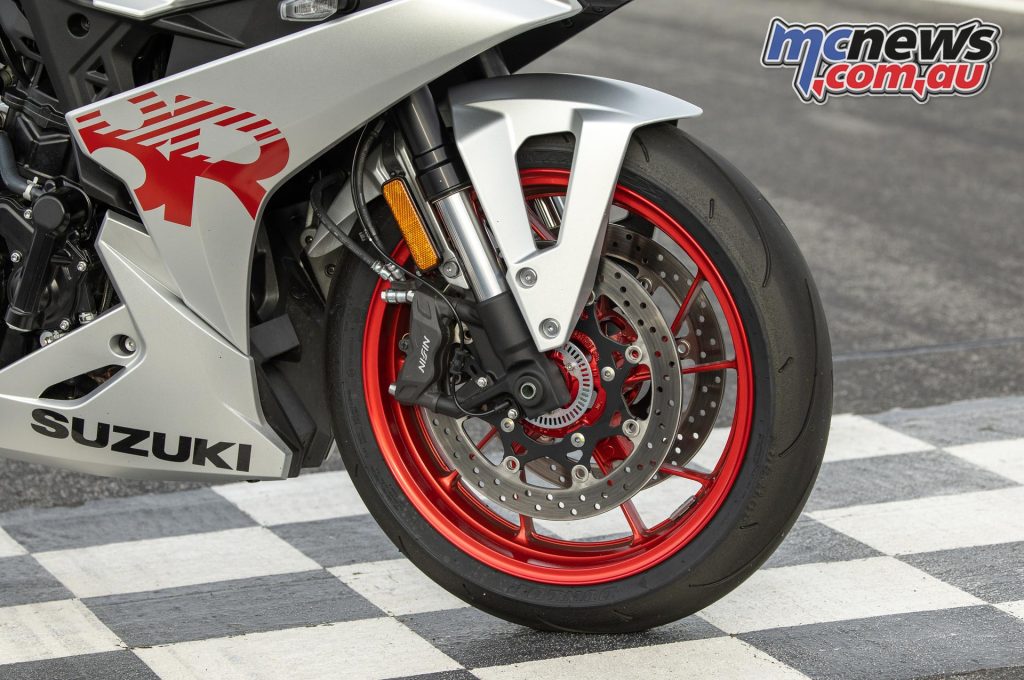
One notable distinction between the 8S and the 8R lies in the piston size of their respective forks. While the 8S features a KYB fork, the 8R boasts a Showa SFF-BP fork with a substantially larger 37 mm piston, a 17 mm increase. This difference enhances the fork action, providing a smoother experience on both road and track.
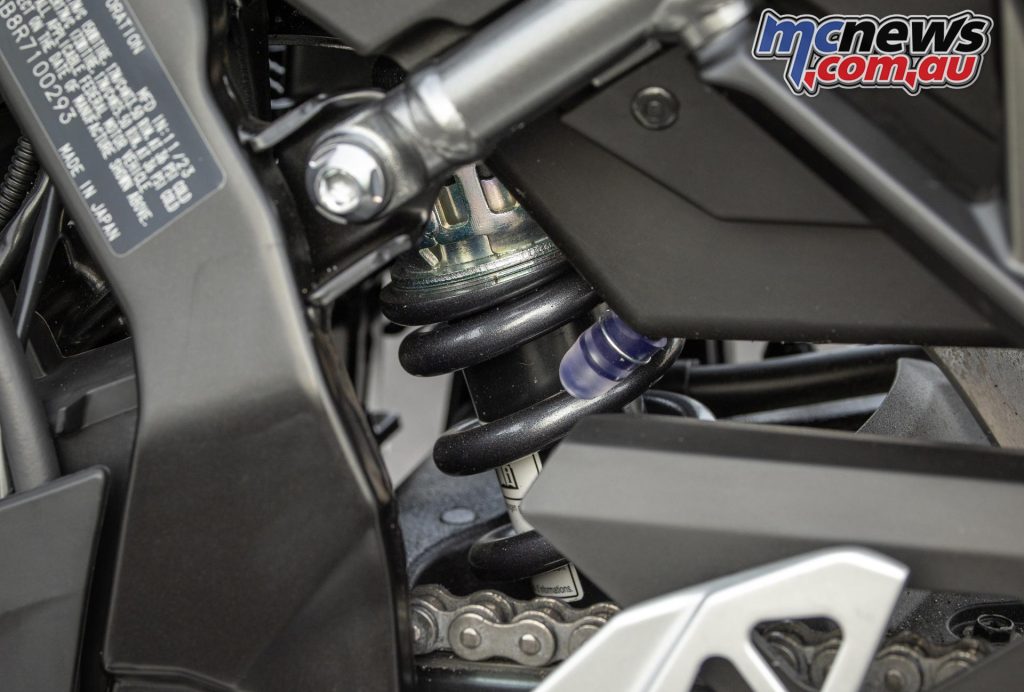
Although the rear shock only offers pre-load adjustment, and may prompt some critical forum discussions in the coming months, the Suzuki engineers, in collaboration with Showa, have successfully crafted an outstanding front end that excels whether being pushed to its limits on the racetrack, or used for everyday rides to the shops.
The 8R exhibits graceful turning capability many other bikes envy, matched to a reassuring sense of control at those nice, high handlebars. Despite not being exactly a lightweight, with a claimed 16 kg weight difference from the R7 when fuelled up, the 8R maintains exceptional stability in its chassis.
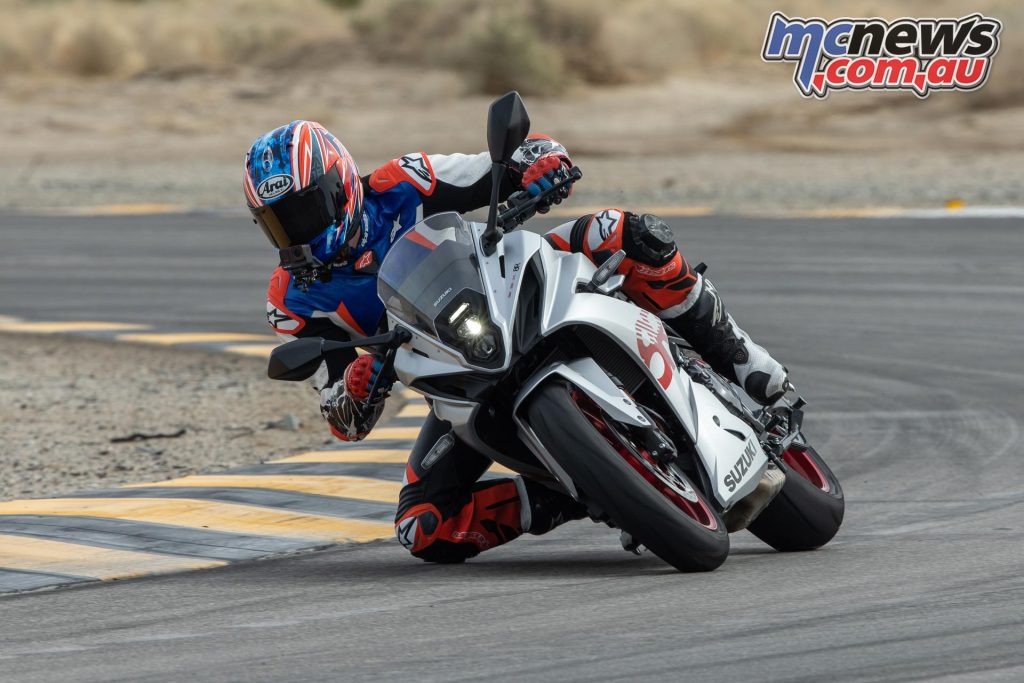
It handles quick directional changes with ease, although a bit more ground clearance would be beneficial. During my track sessions, I found myself wearing through a pair of A’stars race boots, despite making efforts to wedge my oversize feet against the frame.
Unfortunately, the front brake feel doesn’t quite live up to expectations, mainly due to a somewhat budget-friendly master-cylinder. While there is ample braking power at the lever, the modulation falls short in the finesse department. It’s a fixable issue, but I’d have liked Suzuki to have done the work for the customer on that one.
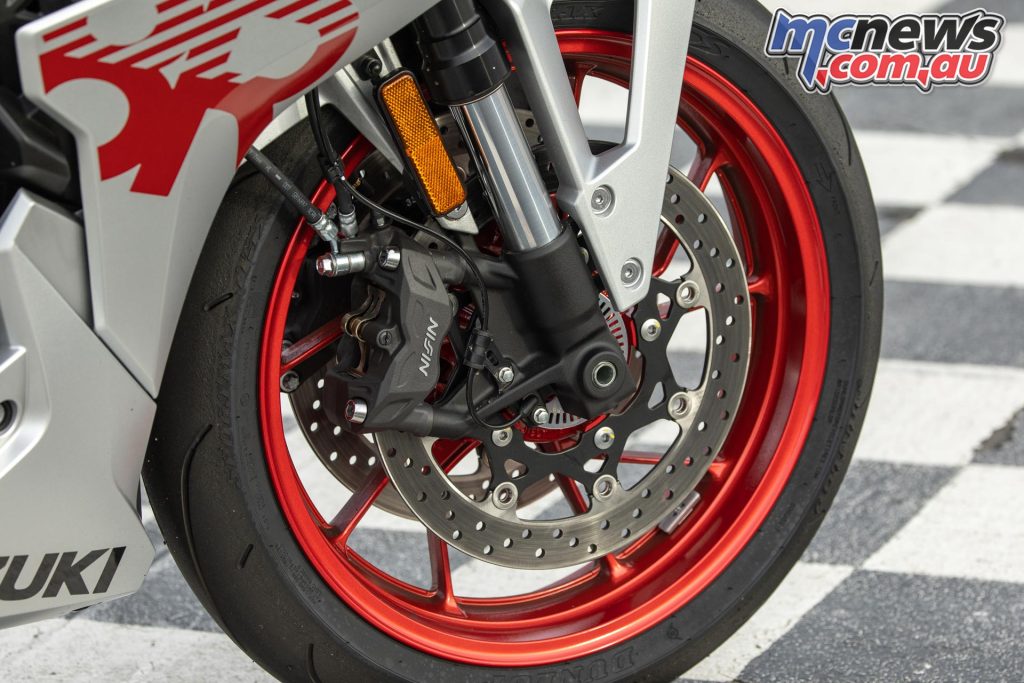
Without doubt, the star of the show is the 270° 776 cc parallel-twin motor. Suzuki’s done a magnificent job with this powerplant, creating one that has more than enough torque in the lower rev ranges for street riding/commuting but also one that will charge along happily in the higher revs.
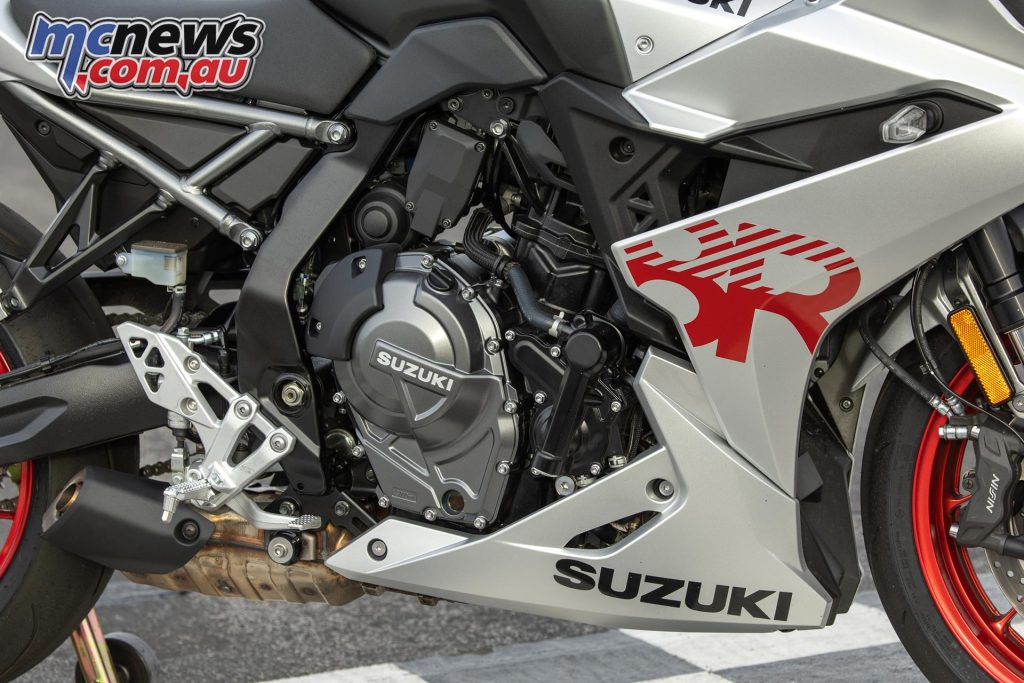
The motor runs two counter-balancers so it’s creamy smooth in its power delivery. There’s three riding modes of A, B and C in the Suzuki Drive Mode Select system, but the delivery is so nice you’ll likely not need anything other than A mode.
Speaking of electronics, the GSX-8R runs a three-stage plus “off” traction control system, but I suspect most will just opt for level one and leave it there. There’s no Inertial Measurement Unit-fettled 10-stage traction control or anything fancy like that on the 8R — just basic TC.
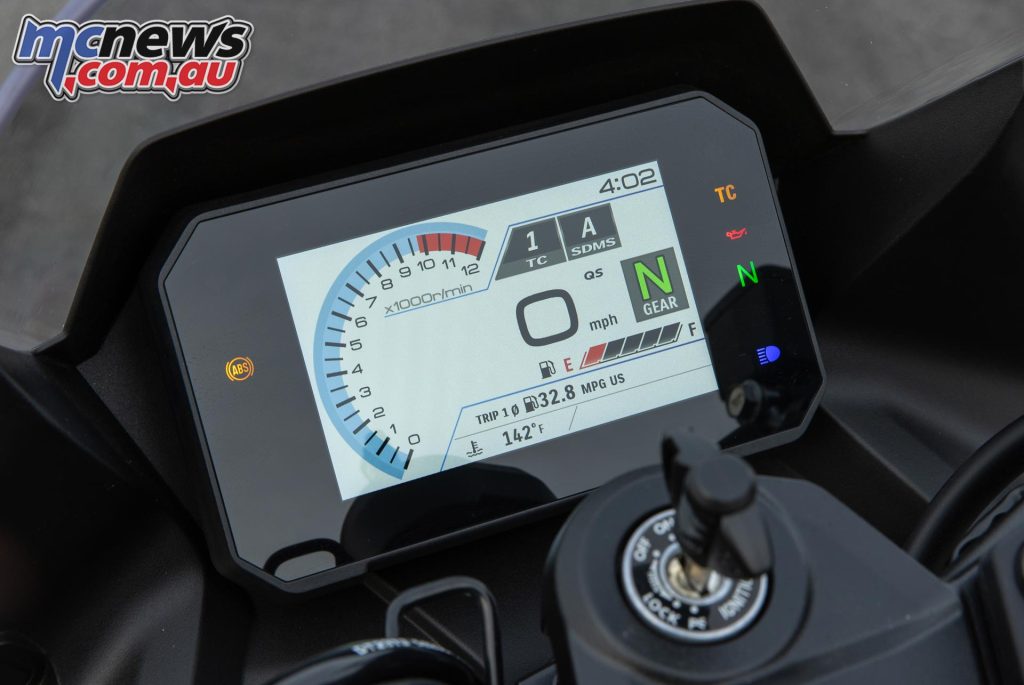
The system works plenty fine on the track, as well as across some damp patches on the street, highlighting the remarkable stability of the chassis and the seamless transmission of power to the tyre through the ride-by-wire throttle.
Suzuki has a well-established reputation for exceptional gearboxes, and the 8R upholds this tradition, particularly when paired with the delightful up-and-down quick-shifter. The shifting process is effortlessly smooth, prompting thought on why other manufacturers struggle to achieve such precision in their quick-shifters. In essence, the Suzuki quick-shifter functions flawlessly.
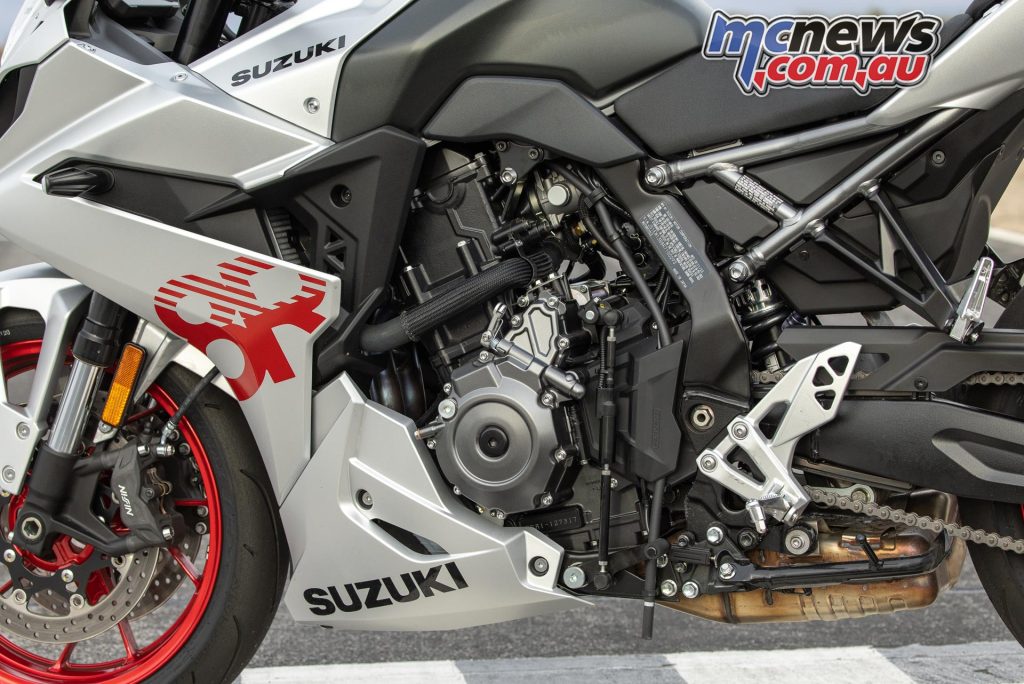
Suzuki claims 83 horsepower/61 kW for the 776 cc twin but it is a little slow to rev up. Once in the higher rev ranges the Suzuki will hold its own, but seat of the pants/bum dyno feel has it a little slower to climb the revs than something like a Yamaha R7.
It’ll be interesting what the various race teams across the globe do with this motor as many of the series that run a middleweight twin run different rules to each other — some allowing a far higher degree of tuning than others.
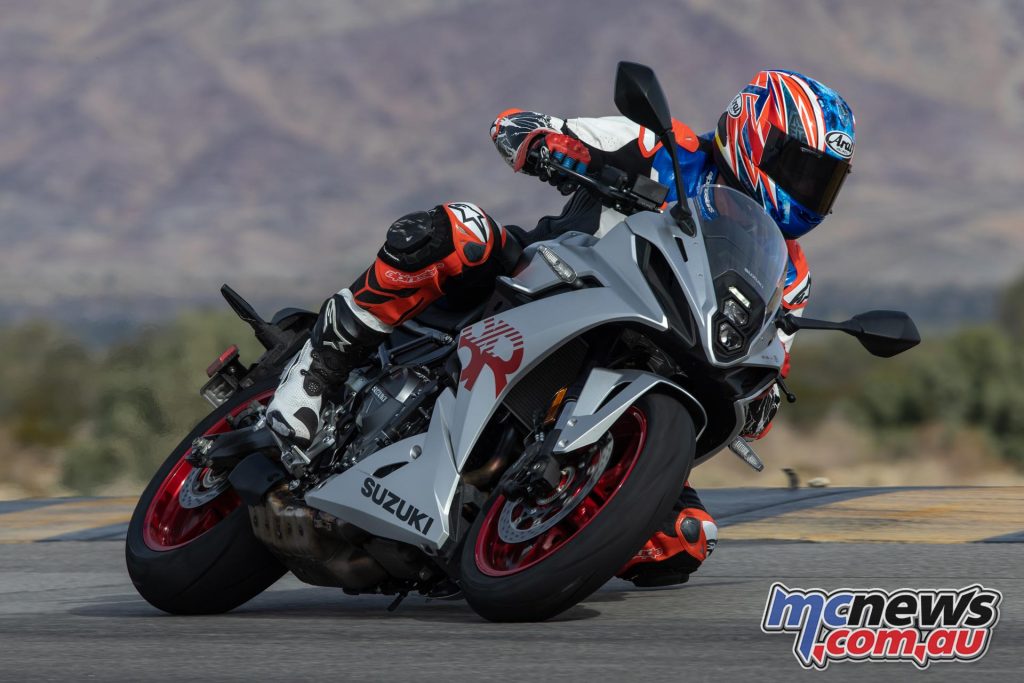
On the American front, you can’t take weight off the flywheel, for example, however the guys who run the M4 Ecstar superbike team and who will field a bike in this year’s MotoAmerica Twins Cup series tell me they’re not worried about peak performance.
When the 8R was going through its homologation for MotoAmerica, Suzuki USA fitted a Yoshimura exhaust system only and hit 92 horsepower straight away, as well as losing a hefty nine kilograms.
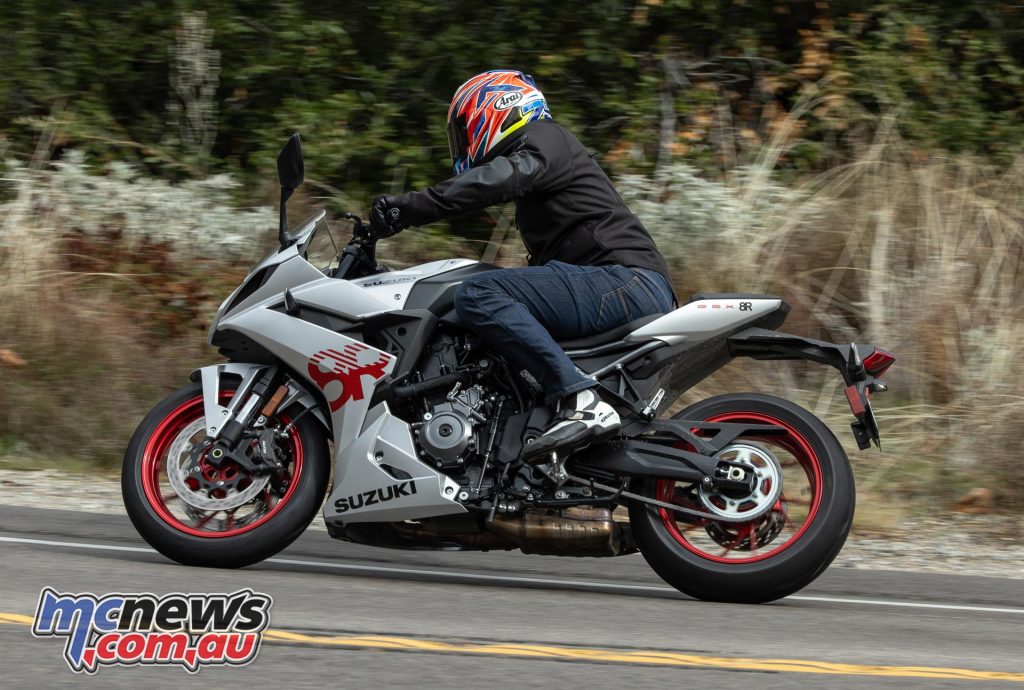
That means the new 8R should hit 100 hp pretty easily, making it more than a match for the smaller but lighter Aprilia RS660 and Yamaha YZF-R7 competitors.
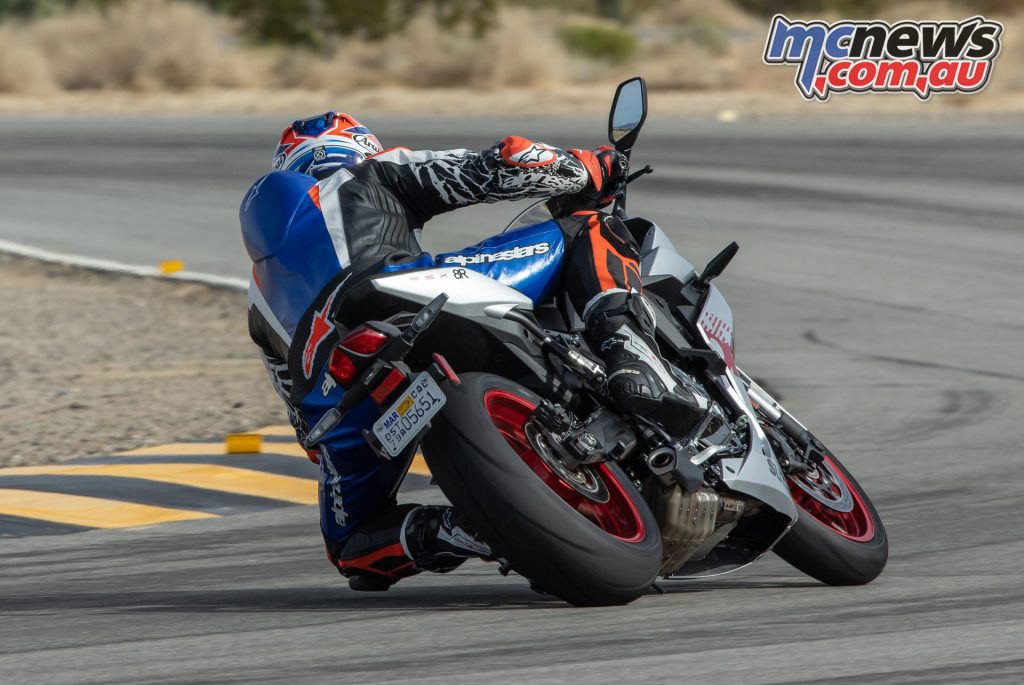
However, the racing side of the 8R is by far the smaller one of the bigger equation. Since Suzuki’s departure from MotoGP, many have been wondering if they would be out of the sportsbike game altogether, but the fact we’ve had this, and rumours of a revamped GSX-R1000 coming soon (I know, I know, but my sources are pretty connected), show the mob that was such a stalwart in sportsbikes for so many years ain’t quite done yet.
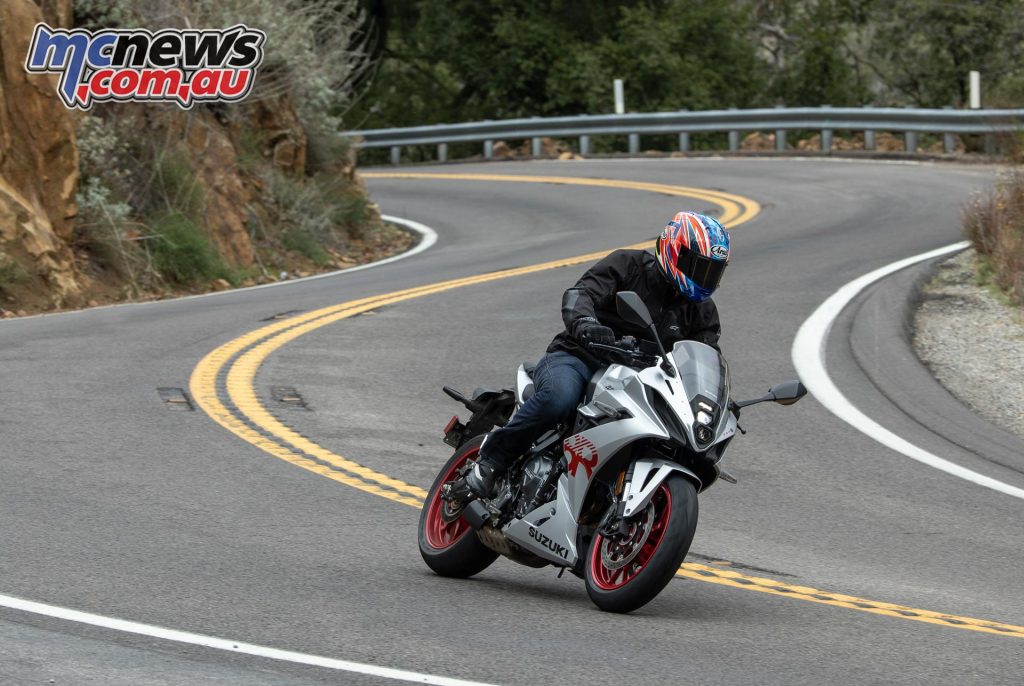
Spec-wise, the GSX-8R isn’t going to blow the hair back of hardcore sportsbike lovers, but it is a blank canvas that will doubtless be improved upon vastly as the aftermarket gets a hold of it. With Triumph’s new Daytona 660 coming (stay tuned for a test on that later this month), sportsbikes are slowly edging back to what they were—sporty steeds but with a nod to practicality.
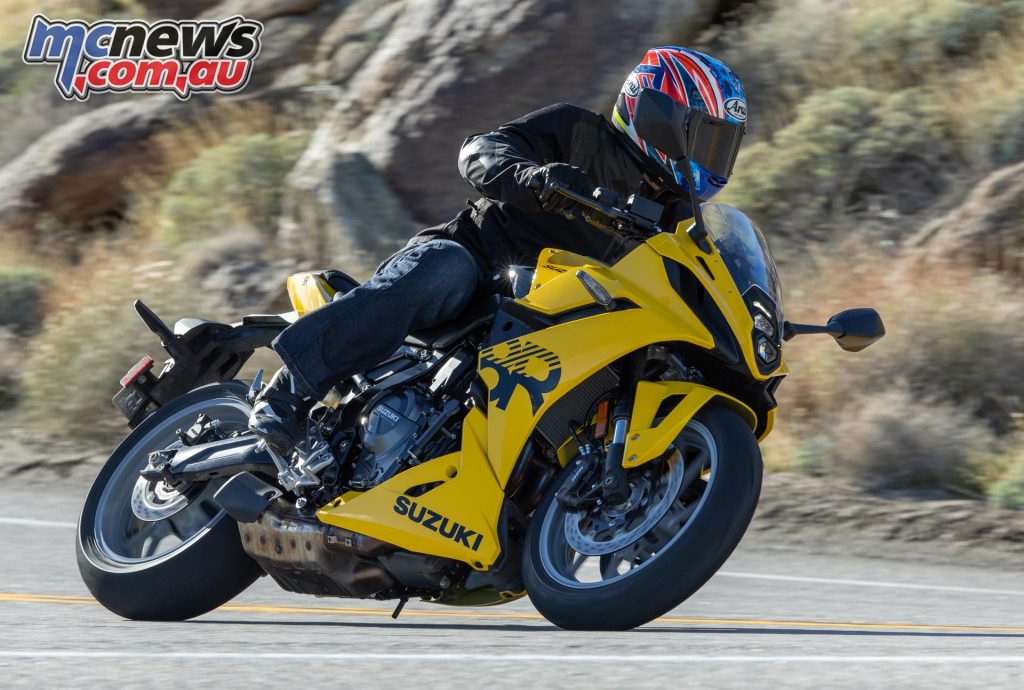
The Suzuki fills a number of different spots in the market. It will tour across the state just as happily as it’ll hunt apexes at Phillip Island, and proves that being a one-trick sportsbike pony really isn’t fashionable anymore.
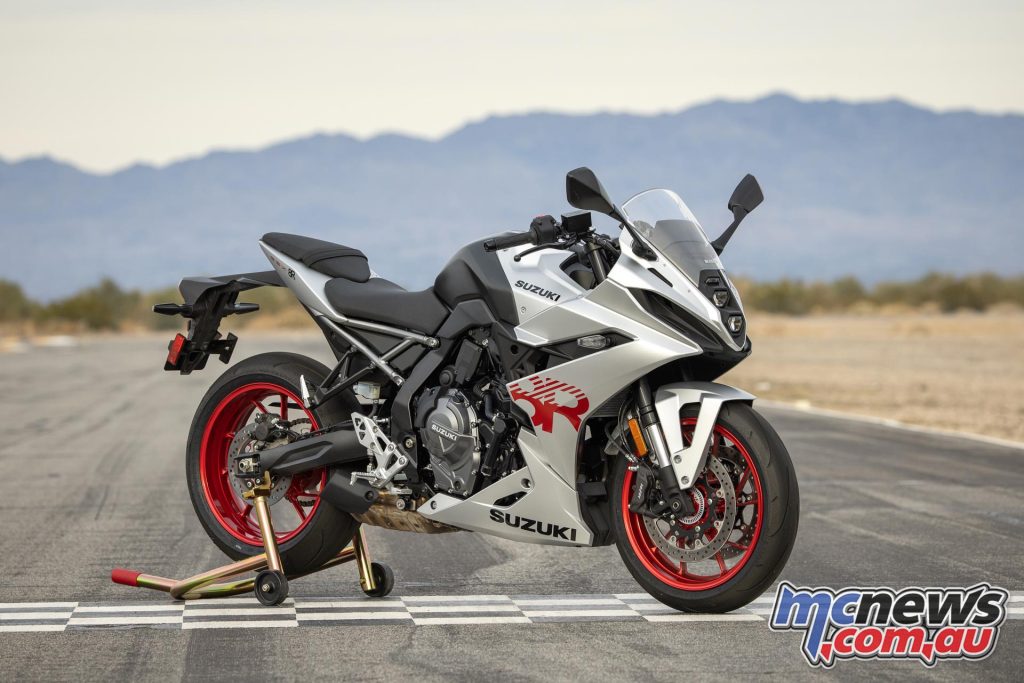
For more information head to the Suzuki Motorcycles Australia website (link).
2024 Suzuki GSX-8R Specifications
| 2024 Suzuki GSX-8R Specifications | |
| Engine | 776 cc, 4-stroke, 2-cylinder, liquid-cooled, DOHC |
| Bore x stroke | 84.0 mm x 70.0 mm |
| Compression ratio | 12.8 : 1 |
| L x W x H | 2155 x 770 mm x 1,135 mm |
| Wheelbase | 1465 mm |
| Ground clearance | 145 mm |
| Seat height | 810 mm |
| Kerb mass | 205 kg |
| Transmission | Six-speed constant mesh |
| Suspension Front | Inverted telescopic, coil spring, oil damped |
| Suspension Rear | Link type, coil spring, oil damped |
| Rake / trail | 25° / 104 mm (4.1 in.) |
| Brake Front | Disc, twin Rear Disc |
| Tyres | 120/70ZR17M/C (F); 180/55ZR17 (R) |
| Fuel tank capacity | 14 L |
| Available | April 2024 |
| RRP | $14,990 Ride Away |




















































































